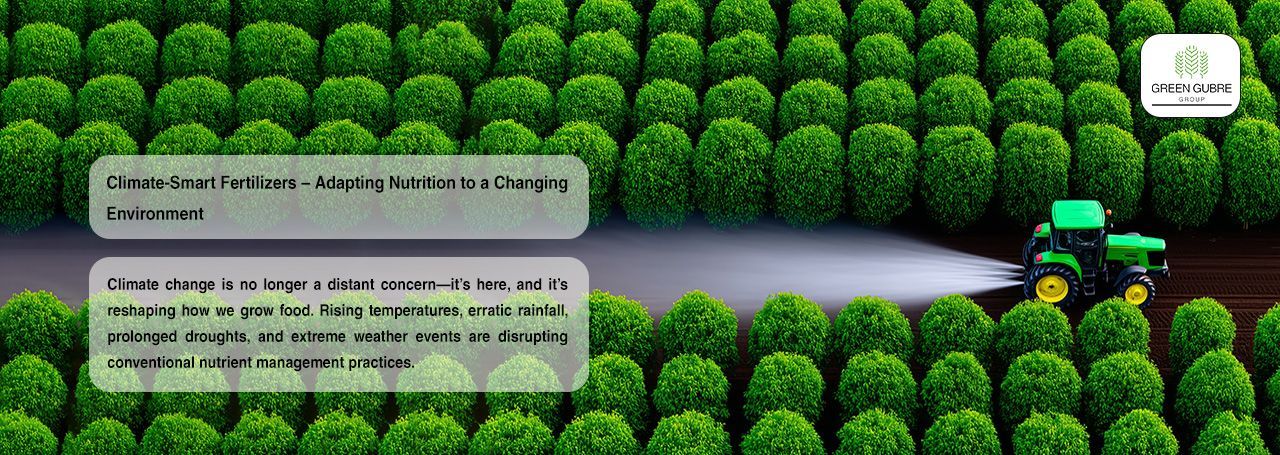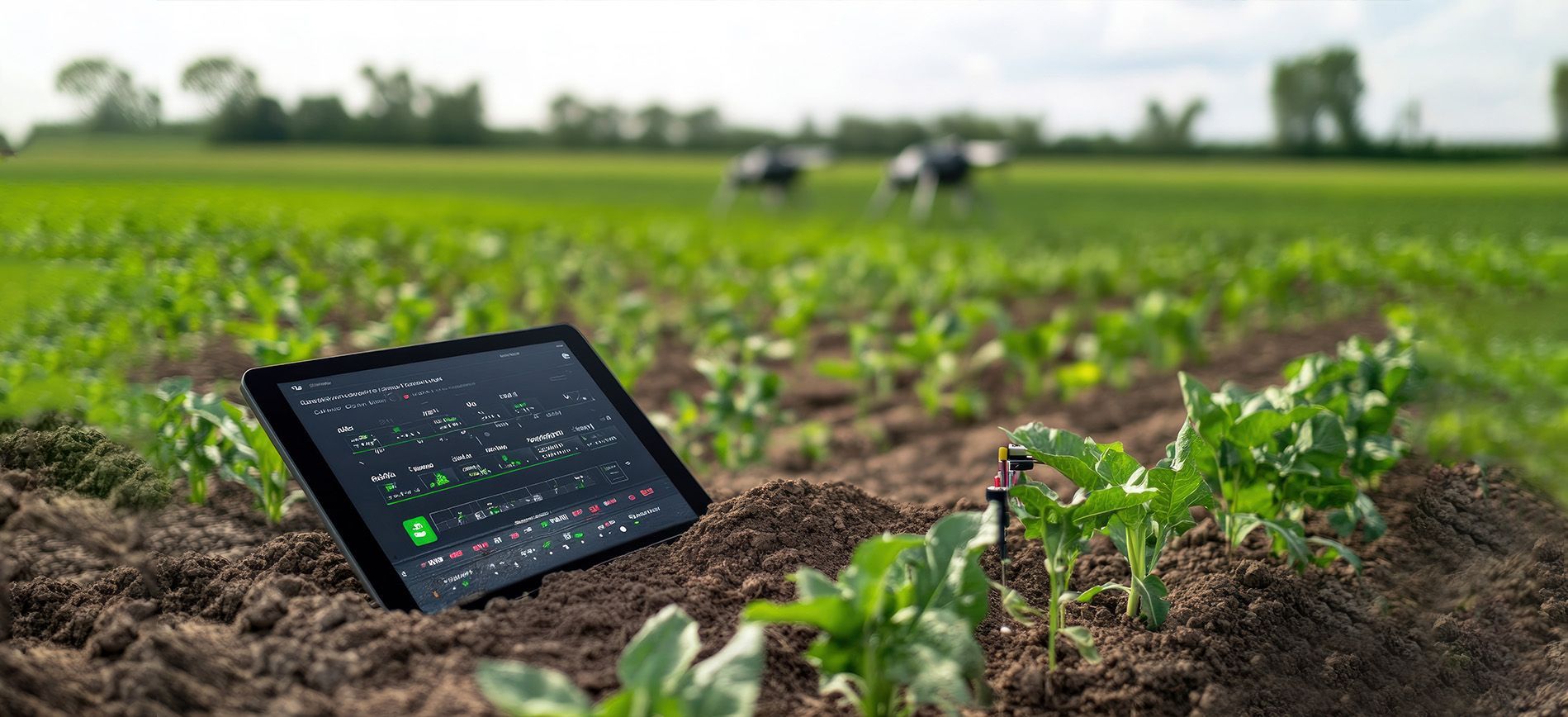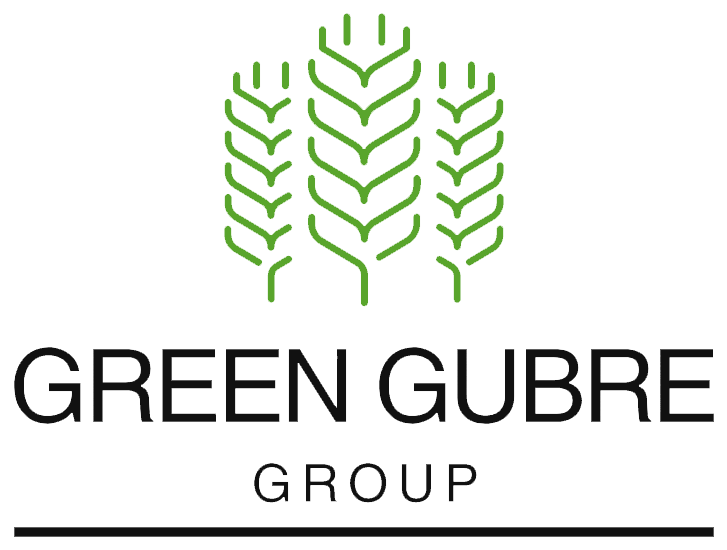Climate-Smart Fertilizers – Adapting Nutrition to a Changing Environment
Climate-Smart Fertilizers – Adapting Nutrition to a Changing Environment

Introduction: Fertilizers in the Age of Climate Change
Climate change is no longer a distant concern—it’s here, and it’s reshaping how we grow food. Rising temperatures, erratic rainfall, prolonged droughts, and extreme weather events are disrupting conventional nutrient management practices. As agriculture races to adapt, climate-smart fertilizers (CSFs) are emerging as vital tools to help farmers maintain productivity while reducing environmental harm.
Designed for resilience, efficiency, and sustainability, climate-smart fertilizers offer solutions that align agronomic performance with ecological responsibility.
Source – FAO – Climate-Smart Agriculture
What Are Climate-Smart Fertilizers?
Climate-smart fertilizers are formulated or managed in ways that reduce greenhouse gas (GHG) emissions, enhance nutrient use efficiency (NUE), and improve crop productivity under variable climate conditions.
They include:
- Enhanced Efficiency Fertilizers (EEFs): Controlled-release, stabilized, or inhibitor-treated products that reduce nitrogen losses.
- Bio-based Fertilizers: Incorporate organic matter or microbial components to support soil health.
- Low-carbon Manufacturing Fertilizers: Produced with reduced fossil fuel dependency or renewable inputs.
- Precision-Applied Nutrients: Matched to crop demand and microclimate conditions through digital agriculture tools.
Source – International Fertilizer Association – Sustainability Tools
How CSFs Help Combat Climate Change
| Impact | Climate Benefit |
|---|---|
| Reduce N₂O emissions | Use of nitrification and urease inhibitors limits greenhouse gas release from nitrogen fertilizers |
| Minimize nutrient runoff | Slow-release products avoid leaching during heavy rains |
| Boost drought resilience | Some CSFs enhance root growth and water use efficiency |
| Improve soil health | Bio-enhanced fertilizers support microbial communities and carbon sequestration |
| Support carbon-neutral farming | Many CSFs are integrated into carbon credit schemes or regenerative agriculture. |
Climate-Sensitive Fertilizer Strategies by Region
- Arid and Semi-Arid Zones: Use polymer-coated urea to reduce volatilization and enhance water retention.
- Flood-Prone Areas: Apply split applications of nitrate-based fertilizers to reduce loss from runoff.
- High-Rainfall Tropics: Incorporate slow-release potassium and phosphorus to improve retention in leached soils.
- Cold Regions: Use nitrate forms of nitrogen in early spring when microbial activity is low.
Examples of Climate-Smart Fertilizer Products
- Urea + NBPT Inhibitor: Reduces ammonia volatilization by 30–50%.
- Polymer-Coated NPK Blends: Releases nutrients in sync with plant needs and soil moisture.
- Biochar-Based Nutrient Carriers: Improve nutrient retention and soil carbon.
- Silicon-Enriched Fertilizers: Boost resilience against drought and heat stress.
- Liquid Humic Acid Blends: Enhance root uptake in stressed conditions.
Source – Journal of Cleaner Production – Sustainable Fertilizer Technologies
Green Gubre Group’s Climate-Smart Fertilizer Solutions
At Green Gubre Group, we are committed to delivering fertilizer solutions that meet tomorrow’s climate challenges today. Our CSF portfolio includes:
- Controlled-Release Fertilizers for extended nutrient availability
- Inhibitor-Stabilized Urea (with NBPT and DCD)
- Organic-Mineral Blends supporting soil structure and microbial health
- NPK + Micronutrient Mixes tailored for low-emission farming
- Customized Fertigation Liquids for water-smart systems
We also provide digital tools for nutrient scheduling, weather-adjusted application advice, and emission tracking.
Conclusion: Fertilize for the Future
The intersection of climate change and agriculture demands innovation—and fertilizers must evolve accordingly. Climate-smart fertilizers are not just inputs; they are adaptive tools for resilience, productivity, and sustainability. Farmers who adopt these solutions today are not only protecting their yields, but also the planet.
Join the shift to climate-resilient nutrition. Let’s grow smarter, together.




